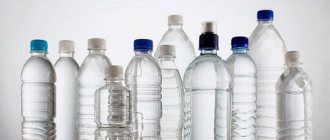The waste paper business, as a type of garbage business, is gradually gaining momentum in our country. And this indicates not only the desire to make a profit, but also the greater consciousness of people. In the context of an approaching environmental disaster, enterprises that recycle garbage waste are vitally needed. Starting with a simple collection of paper waste, over time you can grow to a full-fledged manufacturer of craft paper, toilet paper or ecowool.
About business
Many people have probably heard that in Sweden in 2020 there was no garbage left at all, since it was completely used for recycling.
Unfortunately, Russia cannot boast of such successes. The percentage of waste received for recycling is negligible. European countries have achieved that about 60% of paper waste is recycled. In Russia this figure is no more than 15%.
It turns out that a huge mass of paper is simply thrown into a landfill. Meanwhile, the collection and recycling of waste paper can be turned into a profitable enterprise, which, moreover, contributes to the protection of the environment and the prosperous future of our children.
With a competent approach, the profitability of a waste paper business reaches a record 50%, and the net profit per month is 100 - 150 thousand rubles.
Is it profitable?
According to data, the profitability of such a business ranges from 30 to 50%. But in order to start receiving a good and stable income, it is important to competently develop a business plan, organize a business, and launch an advertising campaign. However, this applies to any line of business.
Definitely, we can only say that recycling waste paper as a business is profitable because:
- This line of activity receives government support.
- Paper is a product that is used almost everywhere, so there will be no shortage of raw materials.
Your task is to organize the business competently and make sure that this recyclable material is brought to you.
Recycling
All waste paper can be classified into 3 classes, depending on density:
- first class - white uncoated paper, the highest quality and most expensive;
- second class - medium-density corrugated cardboard, old books;
- third class – low-density newspaper and paper waste.
There are certain types of paper waste that cannot be accepted for recycling, for example, waxed or laminated paper, thermal paper, tetrapacks, photo paper, tracing paper.
It is reasonable to prepare the collected waste paper in some way before sale. And here there are 2 options:
- Sorting and pressing. The waste will have to be sorted into classes. This is a necessary manipulation, since some buyers are interested in purchasing waste paper of a specific class. Compression is also necessary: it allows you to increase the price, and it is more convenient to transport baled paper.
- Pulp production. Pulp is waste paper that has undergone primary processing. Paper waste is mixed with thinner (water), cleaned and foamed. The pulp can be sold at a higher price than baled waste paper. But you will have to purchase additional equipment (tanks, pumps, fiberizers, etc.).
Staff
At first, starting a waste paper business does not require a lot of hands. Entrepreneurs who started a business by accepting waste paper note that the first ton can be collected in 1–2 months. At this time, a significant amount of effort is spent on advertising and reaching agreements with suppliers. Two assistants will be enough, and these may not be hired people, but family members.
In the future, when the volumes of collected waste paper increase and it is possible to establish stable sales channels, you will need:
- receiver - sorter;
- driver;
- loader (combined with the duties of a watchman).
An entrepreneur can assume the functions of an accountant and sales representative until the opportunity and need for division of responsibilities arises.
Raw material options for intake
Specialization in specific types of waste when opening a collection point depends on several circumstances:
- development of a separate waste collection system within the location of the collection point;
- the activities of industrial enterprises that are capable of providing high volumes of raw materials;
- location of nearby recycling plants and other distribution channels for recyclable materials.
The most common types of recyclable materials for starting a collection business:
- waste paper;
- glass containers;
- scrap metal;
- plastic;
- car tires;
- computer scrap;
- used batteries.
The type of waste and the state of the recyclables market determines the number of operations that will be performed at the reception point: from collection to processing and release of secondary products.
Waste paper collection
The greatest prospects for opening a collection point are when choosing waste paper as the main raw material. This is due to the large volumes of paper and cardboard waste generated, which account for more than a third of all municipal solid waste (MSW). Due to this, stable operation of raw material supply channels is possible, which are:
- industrial enterprises: pulp mills, printing houses;
- individuals handing over a range of waste: books, newspapers, magazines, leftover cardboard packaging.
Such waste belongs to the two least dangerous classes - IV and V. At each receiving point, conditions are established for incoming raw materials, and by choosing to specialize only in class V, the enterprise is exempt from the need to undergo licensing.
Collection of glass containers
Glass container waste differs from other types of waste in that when processed, it produces raw materials with the same characteristics as in primary production. In addition, glass waste can be recycled an unlimited number of times. When receiving glass containers, they are sorted according to two criteria:
- by color: green, brown, colorless, semi-white;
- according to the original condition: container, sheets, scrap.
To transfer glass for recycling, it goes through several operations:
- Sink.
- Grinding or crushing.
For remelting, raw materials are used that are cleared of foreign inclusions (glue, labels, dirt), and also crushed for loading into the furnace.
Glass containers make up 5-20% of the total waste generated, only 10% of this number is sent for recycling, which opens a niche for entrepreneurs.
Ferrous and non-ferrous metal
Recycled metal, by analogy with glass, is not inferior in properties to primary products. When accepting scrap metal, the raw materials go through two sorting stages:
- Primary : black and color.
- Secondary : into components.
The stages of metal processing are similar to glass processing, but are more labor-intensive:
- Grinding by one of the methods: thermal, explosive, mechanical, sawing.
- Cleaning and packaging.
- Remelting.
It is legally established that open storage of scrap metal before transfer for processing is permissible for 10 days, so enterprises are forced to regularly load production lines, even if the volume of raw materials is insufficient.
Plastic waste
Another free niche in the field of waste recycling relates to plastic, the share of which is recycled is no more than 10%. The difficulty in recycling plastic lies in the heterogeneous composition of plastic products: the additives used prevent the joint processing of different types of plastic. When opening a plastic collection point, enterprises choose to specialize among two groups of waste:
- soft : film coatings, car trim, toys, medical supplies;
- solid : water pipes, rectangular or square profiles.
The main processing method is chemical, consisting of 4 types of operations: pyrolysis, hydrolysis, glycolysis, methanolysis. The choice is made based on the characteristics of the received raw materials.
Car tires
Regular receipts of recyclables are most likely in areas where consumables are actively used. The most common of them is rubber, used in the production of car tires, as well as gaskets and seals.
When processing car tires, secondary raw materials are obtained that are inferior in characteristics to primary ones. Therefore, processed products are used only as additives in the manufacture of other goods.
Computer scrap
To work at collection points for computer scrap, it is necessary to attract more qualified personnel than for other types of waste. This is due to the fact that computers consist of many elements made of different materials: plastic, metals, rubber. To be sent for further processing, computers are manually disassembled into their components. Only after this is possible subsequent proper disposal or recycling of each type of waste.
Old batteries
The biggest difficulties when starting a business that accepts recyclable materials will arise when specializing in batteries and accumulators. This is due to the highest hazard class assigned to such waste. On the other hand, in Russia there is only 1 processing enterprise, and no more than a dozen large retail chains are engaged in collection - the market is free for the opening of new enterprises.
Other options
Within 2 years, updated legislation should come into force in Russia, requiring wood processing enterprises to fully utilize resources. This means that all production waste generated by the enterprise must be recycled, used in the manufacture of by-products or in energy generation. The outlook for the industry is that factories may outsource operations.
To make a profit, a waste management enterprise should not be limited to receiving waste, but should produce secondary products.
Suppliers
Suppliers for waste paper collection can be either a separate area (in which, for example, a warehouse is rented) or the entire city. In fact, there are a huge number of organizations and individuals who are willing to give away paper waste for free, since for them it is a headache-free process.
An excellent option is supermarkets and small stores for businesses using waste paper. If their competitors don’t take their waste, then most likely they just take the boxes to a landfill. But supermarkets can supply up to 400 kg. in Week.
You can get hold of waste paper if you cooperate with courts, prosecutors' offices, and office buildings.
It’s a good idea to establish connections with schools and kindergartens. It would be great if you can come to an agreement with school directors about periodic promotions aimed at collecting waste paper from individuals.
It is also advisable to post notices around the area with a phone number. Many conscientious citizens are ready to hand over waste for free, but unconscientious citizens should be offered payment. The average cost of admission to the population across the country is approximately 0.5 - 3 rubles. for 1 kg. waste paper.
Who to sell to
Distribution channels are the most important issue that a new entrepreneur needs to resolve.
The ideal option is to sell baled waste paper or pulp to pulp and paper mills. However, they do not work with small batches, so you will have to collect 2 - 3 tons. The price for 1 ton of pulp and paper is high - 4-5 thousand rubles. But they check paper waste extremely carefully and reduce the price for moisture and contamination. So if you keep paper staples free and store it in a dry place, you are more likely to sell for full price.
In addition to pulp and paper mills, there are resellers who are ready to pick up small quantities. But they pay much less. Resellers can be easily found through advertisements, search engines or forums.
How much money do you need to invest and how much can you earn?
Recycling waste paper is a profitable, but very high-cost business, in which you need to invest several million rubles. The exact cost calculation depends on what exactly you will produce, on what equipment and on what scale. The table shows an approximate list of costs for starting a waste paper recycling plant with one conveyor.
| Expense item | Approximate amount |
| Purchase of equipment (conveyor) | 2.5 million rubles. |
| Plant construction | from 5 million rubles |
| Costs of registration, obtaining permits | 100,000 rubles |
| Primary purchase of raw materials | from 300,000 rubles |
| Total | from 7.9 million rubles |
Monthly expenses are presented in the table:
| Expense item | Approximate amount |
| Staff salaries | 1 million rubles. |
| Depreciation deductions | 500,000 rubles |
| Purchase of raw materials | from 200,000 rubles |
| Utilities | 500,000 rubles |
| Taxes and deductions | 300,000 rubles |
| Total | from 2.5 million rubles |
Production income depends on the nature of the products produced: printing paper, packaging paper, toilet paper, paper bags.
On the domestic market, for one ton of paper you can get 23-33 thousand rubles, 18-28 thousand. rub. - for cardboard. Even with expensive purchases and sales with a minimal margin, you can earn 5.5 million rubles per month at a paper production plant, and 9.5 million rubles per month for cardboard. Keep in mind: this is a very energy-intensive production, where utility bills can eat up to 75% of profits. But even in this situation, the business owner can receive a net profit of about 1.5 and 2.5 million rubles. respectively. The payback period for the plant will be from 4 years, in rare cases – from 2 years.
Recycling of raw materials is a socially beneficial and environmentally friendly business that is developing for the benefit of the planet. If the plant does not dump production waste into local water bodies and does not pollute the soil and air, you are on the right track. But keep in mind that launching such a business requires serious investments and has a long payback period.
Toilet paper production
When waste paper collection reaches high and regular rates, it is reasonable to think about your own production. One of the most successful options is the production of toilet paper. This is an essential product that is always in demand.
To set up a toilet paper business, in addition to premises and personnel, you need additional equipment. It is better to purchase a ready-made full-cycle line for paper production. Prices from Chinese suppliers start from RUB 2,000,000.
Legal aspects: registration of an individual entrepreneur or LLC, obtaining a license and permits from the SES and the Fire Service. By the way, a license is not required for simple collection and sale of waste paper.
In general, the profitability of the toilet paper production business is 30–50%, payback occurs in 9–12 months. But carefully study the issues of competition, since many businessmen have realized that this is a profitable activity.
Advantages of running a waste paper collection business
The main advantages of organizing such a business:
- There is no need for initial financial investments and the availability of start-up capital (except for the cost of fuel and warehouse rental).
- Fast payback.
- No special skills or knowledge required.
- Low level of competition in the segment.
- Relevance from the environmental aspect.
Environmental aspect of running a waste paper collection business
Adviсe
Some advice for aspiring entrepreneurs:
- Soberly assess the presence of competitors. Yes, the waste paper business niche is relatively free, but not 100%.
- Before investing money, say, in buying a gazelle, assess the state of your business. If the supply is stable and buyers are found, then you can invest money without fear.
- Own production is always more profitable than collection.
- There is more paper waste than you think. Put up leaflets, go around high-rise buildings, negotiate with people and organizations. It's not easy at first, but it will pay off.
Conclusion
Business on waste paper opens up vast horizons for profit. You need to have time to settle in while there is little competition. The monetary prospects here are most encouraging. In addition, activities of this kind are considered worthy and respected.
Did you hand over waste paper as a child? Would you rent it now? Does this kind of business seem promising to you? Write your opinion in the comments and don’t forget to rate the article.
Rate this article:
[Total: 1 Average: 5/5] (Article Rating: 5 out of 5)
Author of the article Elena Simakina Lawyer











